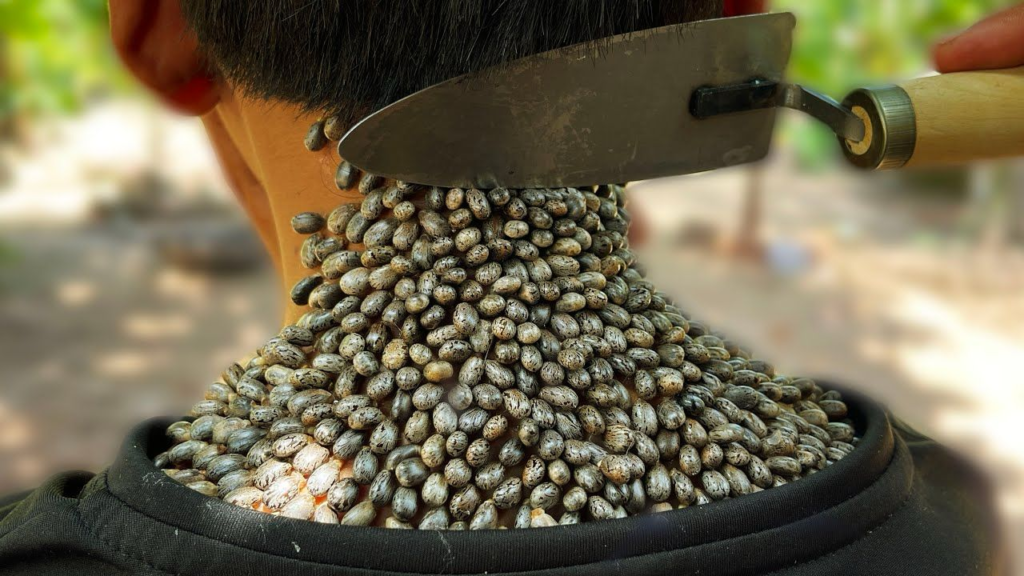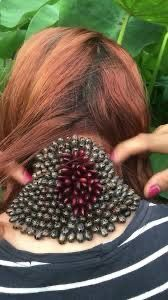

By Thomas Mather
Back in the day, we had ticks. Big, yucky American dog ticks. They usually crawled to the top of your head, you felt a lump, pulled the tick out, flushed them (or found some other form of revenge), and that was that. Usually no one got sick. Ticks were mostly just an annoyance, and that’s what people knew about ticks. American dog ticks are still around but these days, there’s another tick, a tiny blacklegged tick, smaller than a freckle.
It’s also known as the deer tick, and it crawls up under clothes, latches on without much fanfare, and these ticks are LOADED with disease-causing pathogens.
Once attached to people or pets, deer ticks are just hard to find! Their numbers are on the rise and they occur in more & more places – even your backyard! Read our “Top 10 Things Everyone Should Know About Ticks These Days” and stay disease-free.
Back in the day, we had ticks. Big, yucky American dog ticks. They usually crawled to the top of your head, you felt a lump, pulled the tick out, flushed them (or found some other form of revenge), and that was that. Usually no one got sick. Ticks were mostly just an annoyance, and that’s what people knew about ticks. American dog ticks are still around but these days, there’s another tick, a tiny blacklegged tick, smaller than a freckle.
 | 1. Ticks crawl upTicks don’t jump, fly, or drop from trees onto your head and back. If you find one attached there, it most likely latched onto your foot or leg and crawled up over your entire body. Ticks are “programmed” to try and attach around your head or ears. On their normal hosts, ticks also usually crawl up; they want to blood feed around the head, neck, and ears of their host, where the skin is thinner and hosts have more trouble grooming. |
 | 2. All ticks (including deer ticks) come in small, medium and large sizesTicks hatch from eggs and develop through three active (and blood-feeding) stages: larvae (small-the size of sand grains); nymphs(medium-the size of poppy seeds); adults (large-the size of apple seeds). If you see them bigger, they’re probably partially-full or full of blood. |
 | 3. Ticks can be active even in the winterThat’s right! Adult stage deer ticks become active every year after the first frost. They’re not killed by freezing temperatures, and while other ticks enter a feeding diapause as day-lengths get shorter, deer ticks will be active any winter day that the ground is not snow-covered or frozen. This surprises people, especially during a January thaw or early spring day. Remember this fact and hopefully you’ll never be caught off-guard. |
 | 4. Ticks carry disease-causing microbesTick-transmitted infections are more common these days than in past decades. With explosive increases in deer populations, extending even into semi-urban areas in the eastern and western U.S., the trend is for increasing abundance and geographic spread of deer ticks and Lone Star ticks; and scientists are finding an ever-increasing list of disease-causing microbes transmitted by these ticks: Lyme disease bacteria, Babesia protozoa, Anaplasma, Ehrlichia, and other rickettsia, even encephalitis-causing viruses, and possibly Bartonella bacteria. Back in the day, tick bites were more of an annoyance but now a bite is much more likely to make you sick. |
 | 5. Only deer ticks transmit Lyme disease bacteriaThe only way to get Lyme disease is by being bitten by a deer tick or one of its “cousins” found around the world. Deer ticks also are known as blacklegged ticks in the U.S., sheep ticks in Europe, or Taiga ticks in Asia. Dog ticks, Lone star ticks and other types of ticks just don’t seem to be able to transmit Lyme disease. While that’s good news, it makes saving any tick that you find biting more important so you can identify it. Doing so may save a lot of unnecessary doctor visits and treatments. |
 | 6. For most tick-borne diseases, you have at least 24 hours to find and remove a feeding tick before it transmits an infectionEven a quick daily tick check at bath or shower time can be helpful in finding and removing attached ticks before they can transmit an infection. You’ll probably want to check even more carefully if you know you’ve likely been exposed. Many of the disease-causing microbes transmitted by ticks need a “re-activation” period in the tick once it begins to feed. The germs eventually make their way into the tick’s salivary glands and the tick spits them into you while feeding. Some infections, especially viruses, move into the tick salivary glands faster than others. Lyme disease bacteria take at least 24 hours to invade the tick’s saliva. |
 | 7. Deer tick nymphs look like a poppy seed on your skinAnd with about 1 out of 4 nymphal deer ticks carrying the Lyme disease spirochete and other nasty germs in the northeastern, mid-Atlantic, and upper mid-western U.S., it’s important to know what you’re really looking for. They’re easy to miss, their bites are generally painless, and they have a habit of climbing up (under clothing) and biting in hard-to-see places. |
 | 8. The easiest and safest way to remove a tick is with a pointy tweezerThink of a tick as a little germ-filled balloon. Squeeze it too hard on its back end, and all the germs get pushed to the front end, which by the way, is attached to you by the tick’s straw-like mouthpart. Using really pointy tweezers, it’s possible to grab even the poppy-seed sized nymphs right down next to the skin. The next step is to simply pull the tick out like a splinter. Don’t worry if the mouthpart stays in your skin as long as you’ve got the rest of the tick by its head. Other tick removal methods, like a hot match, Vaseline, dish soap and cotton, or various little key-like devices don’t work as consistently as pointy tweezers on all types of ticks. Remember to save the tick and try to identify it (see # 6). |
 | 9. Clothing with built-in tick repellent is best for preventing tick bitesAn easy way to avoid tick bites and disease is to wear clothing (shoes, socks, shorts or pants, and shirt) with permethrin tick repellent built-in. This strategy can be especially effective for protecting children. Dressing kids in tick repellent clothes everyday is a safe and easy way to keep ticks from biting and transmitting disease. Commercially-treated tick repellent clothes last through at least 70 washes, while using kits or sprays to treat your current outdoor wardrobe can last through 6 washes. Tick repellent on clothing, not skin is something everyone needs to know about to stay safe outdoors. |
 | 10. Tick bites and tick-borne diseases are completely preventableThere’s really only one way you get a tick-transmitted disease and that’s from a tick bite. Reducing tick abundance in your yard where you spend a lot of time, wearing tick repellent clothing everyday, treating pets every month with tick repellent spot-on products, getting into a habit of doing a quick body scan for attached poppy-seed sized or larger ticks, and pulling ticks off quickly and safely are all great actions for preventing tick bites. These days, ticks are more than just an annoyance. One bite can make you sick, even change your life! Remember these 10 things and you’ll stay safer. |
Infestation As Bad As Infection! A Tick Horror Story
October 29, 2014

Blacklegged (deer) ticks usually take center stage in most people’s tick talk. They ARE a major disease catalyst, capable of transmitting Lyme disease bacteria and at least 4 or 5 additional pathogens to people and pets. But it’s good not to forget the “plain Jane” of ticks — Brown Dog ticks – because they are truly a different kind of horror story. Brown dog ticks don’t transmit Lyme disease but in some regions can transmit Rocky Mountain Spotted fever to people and pets as well as other nasty pet pathogens, including canine babesia, ehrlichia, and anaplasma, and they are the only tick that INFESTS homes.
At TickSpotters, TickEncounter’s crowd-sourced tick survey for America, it always feels harsh when we break the news to an uninformed submitter that they have brown dog ticks. It’s not like they’re deer ticks, right? What could be so bad about brown dog ticks? Well, think of brown dog ticks as the cockroach of the tick world. Living in your home, scurrying across the floor or up the walls, dining on your pet…or even you! Once even just one engorged female brown dog tick finds its way into a home or live-on boat, you’ll likely be facing the prospect that they’ll be infesting floor boards, furniture, dropped ceilings and more, in no time. Scary stuff!!
“How did this happen”?
Have you recently had your pets in a kennel or perhaps you recently brought a new dog home from a breeder or the pound? Those are very common ways for these ticks to make it into the home. Once in your home, their numbers can increase relatively quickly; brown dog ticks can complete an entire life cycle–from one engorged female to hundreds of un-engorged adult ticks in a little over 2 months.

“Is there any hope”?
You CAN rid your home of brown dog ticks, but once the pest is identified correctly you need to move quickly and take the most effective actions! Getting rid of brown dog ticks can be a full time job costing hundreds of $$$ or more.
You’ll need to coordinate treatments on your pet with treatments in your home (and possibly in the environment around your home). We recommend that you consider using Bayer’s 8-month Seresto collar for all pets in the household, and start this immediately; because of Seresto’s long-lived tick killing action, it helps avoid gaps in treatment while you’re trying to break the tick cycle in the home. Just one adult female tick that feeds successfully on your pet due to a missed treatment can lay 3,000 eggs or more and just perpetuate the problem. This means that you need to be extremely consistent with your efforts and use the best products available.
We also recommend finding an exterminator having successful experiences with brown dog tick control in the home and around the yard (you might even ask for references). You’ll likely need one or two in-home and possibly around the yard treatments, in conjunction with the on-pet protection. Other popularly reported strategies like dips, shampoos or diatomaceous earth may kill a few ticks but you’ve got to be very effective to break this tick’s life cycle if you hope to eliminate it from your house.
A recent TickSpotter story from Kevin in Glendale, AZ.

“Thanks so much for the information.
It is indeed an infestation. I have been working diligently to remove from the dog, the cat, and the walls and rest of the house and this information will be helpful moving forward. Two-three weeks ago I was removing “seedlike” ticks from the dog. Now they appear more like little spiders.
The dog has been treated with [tick control]. It does not seem to be working.
The dog has been bathed with flea and tick shampoo, which seems to send the ticks running initially, but a few days later they can be found on the dog.
The cat has also been bathed with flea and tick shampoo, which seems to help—though it is difficult to tell because the cat is not cooperative when it comes to checking for ticks!
The local natural pet food store sent me home with a 50 lb bag of diatomaceous earth and suggested it was a natural way to control ticks on the dog, in the home, and in the yard. That was going to be my next plan of attack.
The dog has not been to any kennels or anywhere else exotic. We have a band of raccoons** that roam the neighborhood and I wonder if they could be responsible, with ticks moving from them to bushes and then to my dog (who loves getting into bushes).
I grew up in western NY, we were always cognizant of ticks. Who knew they’d be in the desert!
I appreciate you taking the time to contact me. And I surely would welcome any additional advice or information.”
**One note from Kevin’s story: Brown Dog ticks are a fairly commonly tick encounter in the Phoenix area. Perhaps a neighbor also has an infestation. We don’t think Kevin’s “plague” came from the local raccoons. We hope Kevin checks back in, and we’ll post any updates on this page.
Yet another horror story! Steve from Tacoma, WA bought a dog from Texas…

Steve from Tacoma, WA,
“We live in Tacoma, WA and bought a dog from Texas. It arrived with about 100 engorged ticks on it. We have been plucking, washing and medicating the last 2 days.”
Yikes! That’s definitely NOT one of the first experiences you’d like to have with a new pup.
We’re getting an awful lot of Brown Dog tick stories these days. Everyone might want to also take a look at a couple of other Tick Notes that relate to this same problem — “Ticks crawling up my walls. Help!! ” and “The difference between inside ticks and ticks inside”.

It was a sweltering afternoon in Hyderabad, Sindh, when 10-year-old Ali returned home from a weekend camping trip with his family. As his mother helped him unpack, she noticed something alarming: a cluster of small, dark bumps on the back of his neck. Upon closer inspection, her worst fears were confirmed—Ali’s neck was teeming with ticks.
The Discovery

Ali’s mother had heard of ticks but had never encountered them firsthand. These tiny arachnids had latched onto her son’s skin, feeding on his blood and potentially transmitting dangerous diseases. Panic set in as she realized the severity of the situation.
Understanding the Enemy
Ticks are parasitic creatures that attach themselves to hosts, feeding on their blood. They can transmit various illnesses, including Lyme disease and Rocky Mountain spotted fever. In regions like Sindh, ticks are prevalent in grassy and wooded areas, making outdoor activities a potential risk.

The Removal Process
Determined to help her son, Ali’s mother sought guidance on proper tick removal. She learned that using fine-tipped tweezers is the most effective method:
- Preparation: She sterilized a pair of tweezers with rubbing alcohol and donned gloves to prevent any potential disease transmission.
- Grasping the Tick: Carefully, she grasped each tick as close to the skin’s surface as possible, aiming to remove the entire tick, including its head.

- Steady Removal: With a firm, steady motion, she pulled the tick upward without twisting, ensuring the mouthparts didn’t break off and remain embedded in the skin.
- Aftercare: After each removal, she cleaned the bite area with soap and water, followed by an antiseptic to prevent infection.
- Disposal: The removed ticks were placed in a sealed container with alcohol to ensure they were dead and couldn’t pose further risk.

Medical Attention
Despite successfully removing the ticks, Ali’s mother took him to a local clinic for a thorough examination. The doctor commended her prompt action and advised monitoring Ali for any signs of tick-borne illnesses over the next few weeks.

Prevention for the Future
This harrowing experience served as a wake-up call for Ali’s family. They implemented several preventive measures:
- Protective Clothing: Wearing long sleeves and pants during outdoor activities to minimize skin exposure.
- Tick Repellents: Applying insect repellents containing DEET on skin and permethrin on clothing.
- Regular Checks: Conducting full-body tick checks after spending time outdoors, especially in tick-prone areas.
- Landscaping: Keeping their yard tidy by mowing the lawn regularly and removing leaf litter to reduce tick habitats.

Conclusion
Ali’s encounter with ticks was a frightening ordeal, but it highlighted the importance of awareness and prompt action. By educating themselves and taking preventive measures, his family turned a terrifying experience into a lesson in vigilance and care.
Note: This narrative is a fictionalized account based on common tick infestation scenarios. For accurate medical advice and information on tick removal, please consult healthcare professionals or visit reputable medical websites.

